I've Grown Hundreds of Shrubs in the USA and Europe – These 5 Flowering Stunners Are My Non-Negotiables
Expert gardener Teo Spengler has experience in growing shrubs in different climates and landscapes, but there are some varieties she always comes back to.
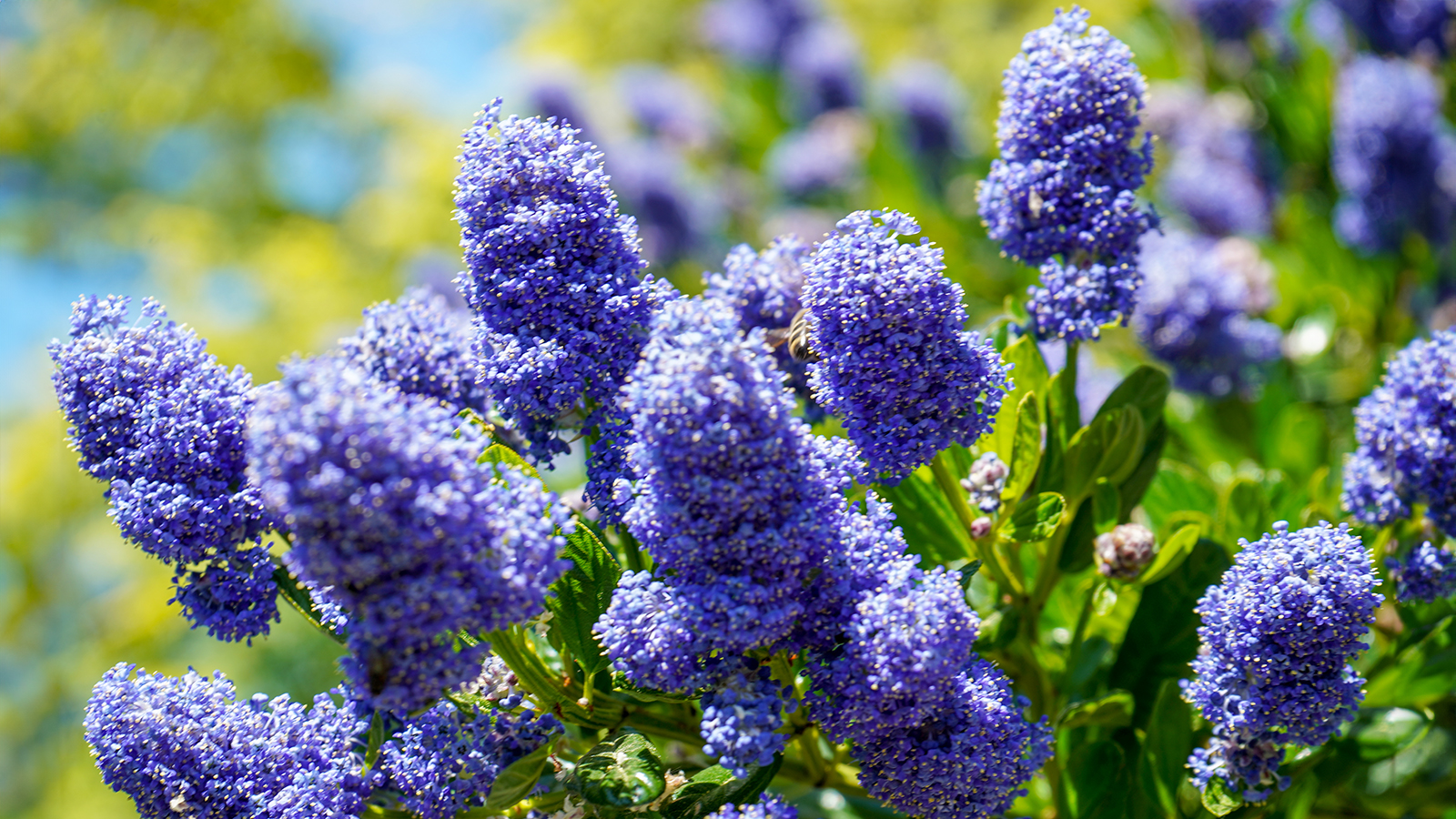

Shrubs are the workhorses of the garden. In my 30 years as a gardener and garden writer, I’ve landscaped backyards from San Francisco (where the soil is essentially beach sand) to the French Basque Country. Additionally, I grew up in Alaska, which has its own unique challenges. Although trees and flowers play a big role in my backyards, I always rely on shrubs to set the basic structure of the gardens.
I’ve probably planted 200 different types of landscaping shrubs in my lifetime – most of them on my mountain property in France. One of the first steps I took after I bought the land was to have a stake and wire fence installed around the large parcel on which the small house sits. Then I planted a hedge of mixed shrubs inside that fence. This gave me an opportunity to test out a large variety of shrubs to see which held up well on the mountain slope. But I’ve tried more than a few shrubs in San Francisco, too.
Coastal California has a Mediterranean climate, with a warm summer and a wet, cool winter, while Southwestern France has four distinct seasons, including scorching summers and snowy/icy winters. It makes sense that only a few of the French shrubs worked well in my sandy backyard in the Outer Richmond area of San Francisco. This means I have to choose shrubs that work for each climate.
Tips for Planting Shrubs
You can buy a package of annual flower seeds for a few dollars, so reseeding every year is not out of the question. But shrubs are more costly, and rightly so. Shrubs can last several decades. Given that, it pays to pick them carefully and plant them in good soil in an appropriate location.
Shrubs do not all have the same optimal exposure requirements. Some shrubs need full sun, others shade; many prefer morning sun and afternoon shade; some love the dappled sun beneath a tree canopy. In short, you need to learn about the shrubs you are inviting into your yard and be sure to understand their needs. Siting each shrub in its ideal sun exposure will create happier plants that live longer and a more vibrant garden. You also need to check shrubs are compatible with your USDA hardiness zone or other regional planting zone.
My 5 Non-Negotiable Shrubs
When I was preparing to write this article, I decided to jot down a shortlist of the shrubs I absolutely adore. When I was finished, I had noted down 47 shrubs! The process of narrowing down the list was painful, but, in the end, I identified the 5 that I just couldn’t live without – these are my non-negotiables.
1. Mophead Hydrangea
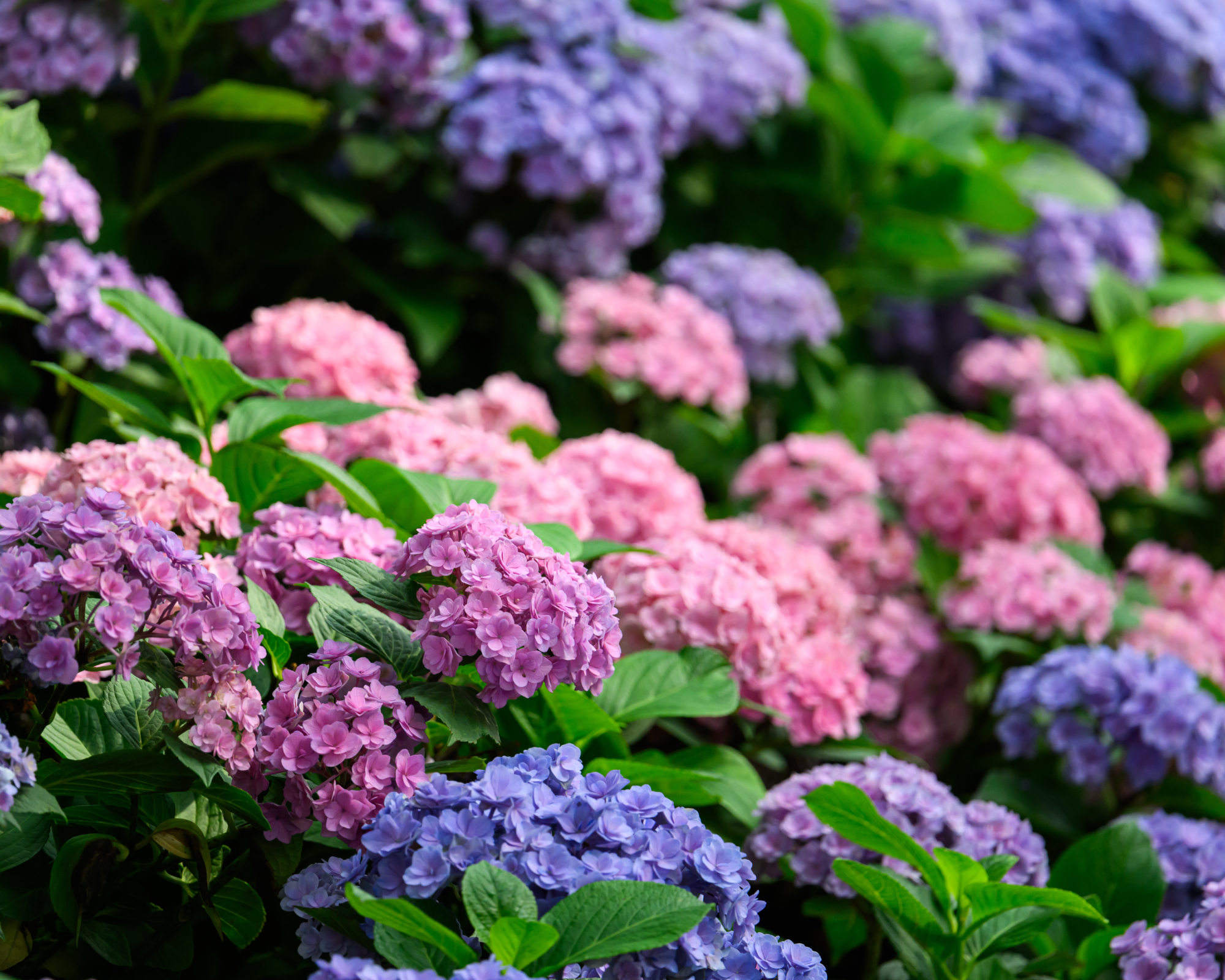
Mophead hydrangea – also known as bigleaf hydrangea – gets the top spot in my garden because it’s one of the rare shrubs that thrives equally well in my gardens in France and California. While these beauties are sometimes called French hydrangea, they actually hail from Asia, yet they’ve managed to become the most popular hydrangea in the Western world.
Sign up for the Gardening Know How newsletter today and receive a free copy of our e-book "How to Grow Delicious Tomatoes".
“Bigleaf” really is an apt name, since the leaves can be larger than your hand, but it’s not the foliage that makes this plant a showstopper. The real magic lies in the flowers, which come in two main forms: the big and round “snowball” type, like this Proven Winners Wee Bit Grumpy bigleaf hydrangea from Lowe's, and the “lace cap” type, with delicate disks of short, fertile flowers framed by larger, showy sterile ones, like this Lowe's Pop Star reblooming hydrangea. Both kinds keep the garden glowing from spring through summer, and certain cultivars even treat you to a second act in autumn.
Hydrangea macrophylla, as it’s known botanically, can grow up to 6 feet (1.8m) tall and wide, thriving in USDA zones 5 through 10. It prefers partial or dappled sun, well-draining acidic soil, and rewards you with flowers in shades of blue, pink, purple, or sometimes white.
What makes me love them so much? For one, they grow quickly, filling in spaces in no time. The flowers really are spectacular, and the plants are surprisingly adaptable when it comes to sunlight, soil, and even climate zones. San Francisco, for instance, falls outside their “official” range, yet they flourish there. They don’t demand much in the way of care – a little watering during their first year and again during droughts keeps them happy – and they propagate with ease from cuttings. Pruning isn’t required to keep their structure, though if you want to shape them, it’s best to do so right after the blooms fade.
And perhaps the most delightful trick of all: you can change the color of hydrangea flowers. In acidic soil, they bloom blue, in alkaline soil, they turn pink, and with a soil pH right in between, you’ll often get a regal purple. This Gardenwise Slow Release Hydrangea Fertilizer from Amazon helps to acidify the soil.
2. Flowering Maple

Flowering maples are not maple trees at all, though their lobed leaves certainly resemble true maple foliage. Also known as abutilon or Indian mallow, these shrubs carry themselves like small trees, their maple-like leaves providing the perfect foil for oodles of brightly colored, hibiscus-like flowers with prominent yellow stamens. In warm zones, they bloom with exuberance from early spring straight through to late fall, making them one of the longest-flowering shrubs you can grow.
In my San Francisco garden, I’ve planted several varieties, and they’ve become a feature I can’t imagine being without. Their nectar draws in bees and birds, adding constant movement and life, while the bright crimson flowers – shaped like tiny Chinese lanterns – never fail to lift my spirits.
Abutilon, as they’re called botanically, can reach 10 feet (3m) tall and 5 feet (1.5m) wide, thriving in USDA zones 9 to 10. They prefer full or partial sun, well-draining acidic soil kept moist, and they’ll reward you with flowers in shades of red, pink, orange, crimson, and yellow.
I’ve always been a fan of hibiscus flowers, and the thickly petaled blooms of flowering maple take that same shape and push it into another realm of wonderful. They only thrive in mild-winter climates, but in my own garden, they light things up from spring through fall. I’ve even propagated them from cuttings and gifted young shrubs to my daughter and my neighbors, spreading the joy a little further.
Whenever I find myself in a garden center offering different cultivars, I can’t walk out with just one. The crimson blossoms are my first love, but I’m equally smitten with the yellow ones freckled with red, the dark maroon blooms, and the orange flowers streaked with crimson, like this stunning Orange abutilon plant from Walmart – each one seems more beautiful than the last.
While many online guides will insist that abutilons are “heavy feeders,” mine have flourished without a single dose of fertilizer. They are, quite simply, the kind of shrub that thrives without fuss yet delivers season after season of color and delight.
3. Forsythia

Forsythias (Pyracantha coccinea) are the kind of shrubs that, for most of the year, quietly blend into the background. Their green leaves are pleasant enough against the branching trunk, but nothing to make you stop and stare. In spring, however, they transform entirely. The moment the brilliant yellow blooms appear, the whole garden seems to wake up. Some people wait for the swallows to return to declare that spring has arrived, but when I’m in France, I simply keep an eye on my forsythia. After losing its leaves in winter, it suddenly bursts into a blaze of canary-yellow flowers, glowing like a golden sunspot for two glorious weeks before the leaves return.
Native to China and Japan, forsythias are low-maintenance, fast-growing shrubs that bring a cheerful focal point to the spring garden while attracting bees and butterflies. Depending on the cultivar, they can be as small as 1 foot (30cm) tall or reach a mature height and spread of 10 feet (3m). Brighter Blooms' Lynwood Gold forsythia shrub, available at Walmart, is a captivating variety that's ideal for hedges.
My forsythia in France is one of the shrubs I treasure most. Those bright yellow blossoms never fail to lift my mood, and they’re the very first flowers to bloom in spring, offering much-needed food for early pollinators. Although they put on their best show in full sun, they’re remarkably tolerant of different growing conditions in USDA zones 5 to 8, happily settling into loose, well-drained soil, heavy clay, or even sand. Yet their flower color is always the same unmistakable, joyful yellow. They’re drought-tolerant too; I hardly ever water mine except during particularly hot, dry spells. And, like many of my favorite plants, they’re generous enough to share – you can propagate them easily from cuttings or by layering, ensuring that their springtime brilliance can brighten more than one garden.
4. Scarlet Firethorn
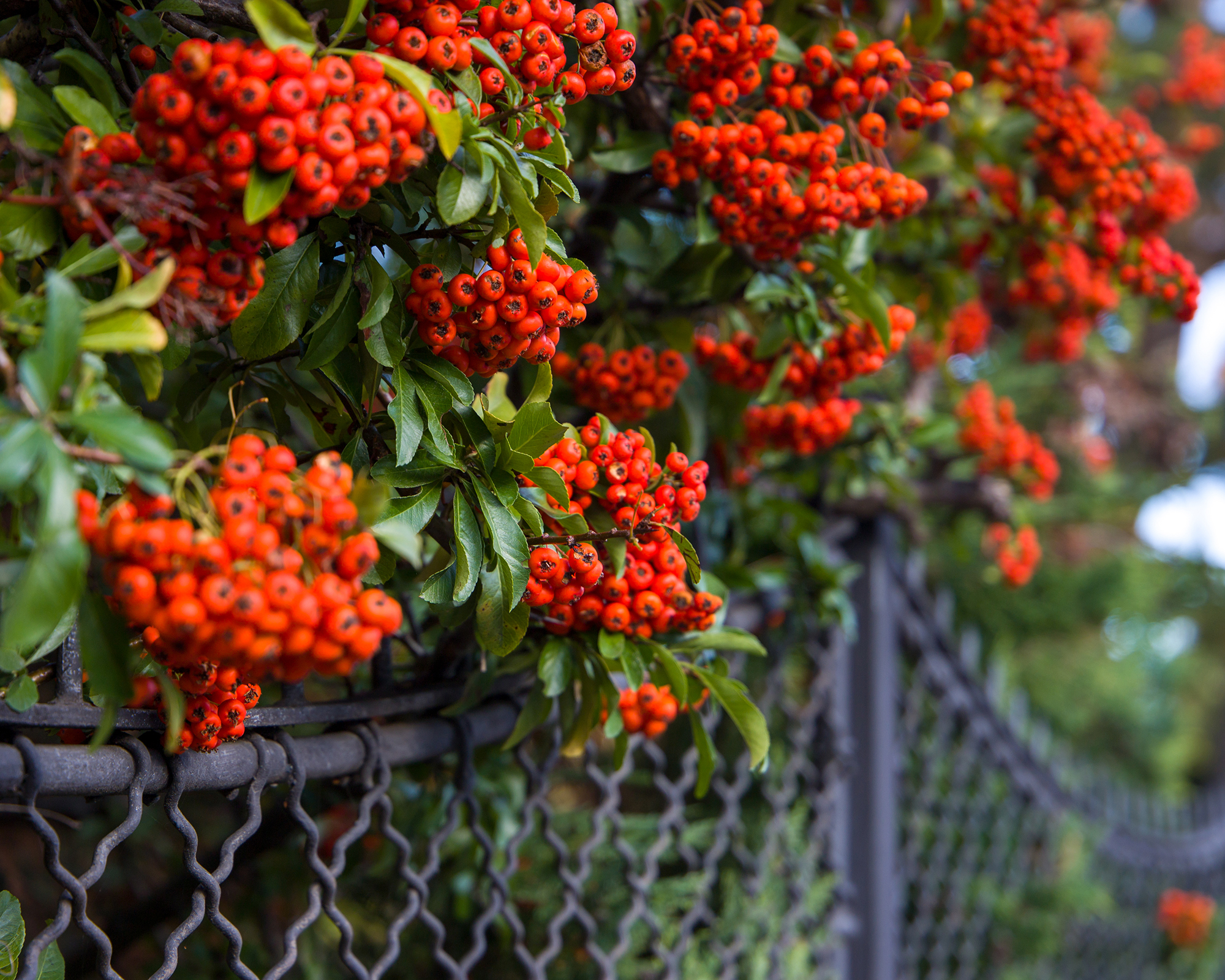
Scarlet firethorn is a formidable, thorned shrub that forms an almost impenetrable hedge along a property line. Native to Europe, it offers far more than just its needle-sharp defenses. In spring, its dark green foliage is brightened by drooping clusters of white flowers, and by fall, those same branches are weighed down with vivid scarlet berries. In my part of France, firethorn stays completely evergreen, though in regions with colder winters it becomes semi-evergreen, holding onto much of its foliage even through the chill.
It’s a fast grower and can reach impressive heights, so the size of those thorns makes regular trimming essential. I keep mine to a manageable 6 feet (1.8m), as once it grows taller than you are, regaining control becomes a prickly challenge. Still, there’s a trade-off – the taller the shrub, the more valuable shelter it provides for wild birds and small mammals. Pyracantha coccinea, as it’s known botanically, can grow up to 18 feet (5.5m) tall and wide, thriving in USDA zones 6 to 9 in well-draining loam and full or partial sun.
I’ve come to think of firethorn as my guard-dog plant. It keeps my fence line secure and stops everything from wild Basque ponies called pottoks to roaming wild hogs – and even the occasional overly curious person – from wandering in. Yet for all its defensive qualities, firethorn is also strikingly ornamental. Its spring blossoms attract bees and butterflies, and its red-purple berries, which cling to the branches all winter, feed native birds when other food is scarce. For a brighter variety, this Pixies Gardens Pyracantha Government Red Liner, available at Walmart, has tomato red berries. Those same dense, thorned branches provide a year-round refuge for birds and small mammals, making firethorn not just a barrier, but also one of the most valuable and wildlife-friendly shrubs in my garden.
5. California Lilac
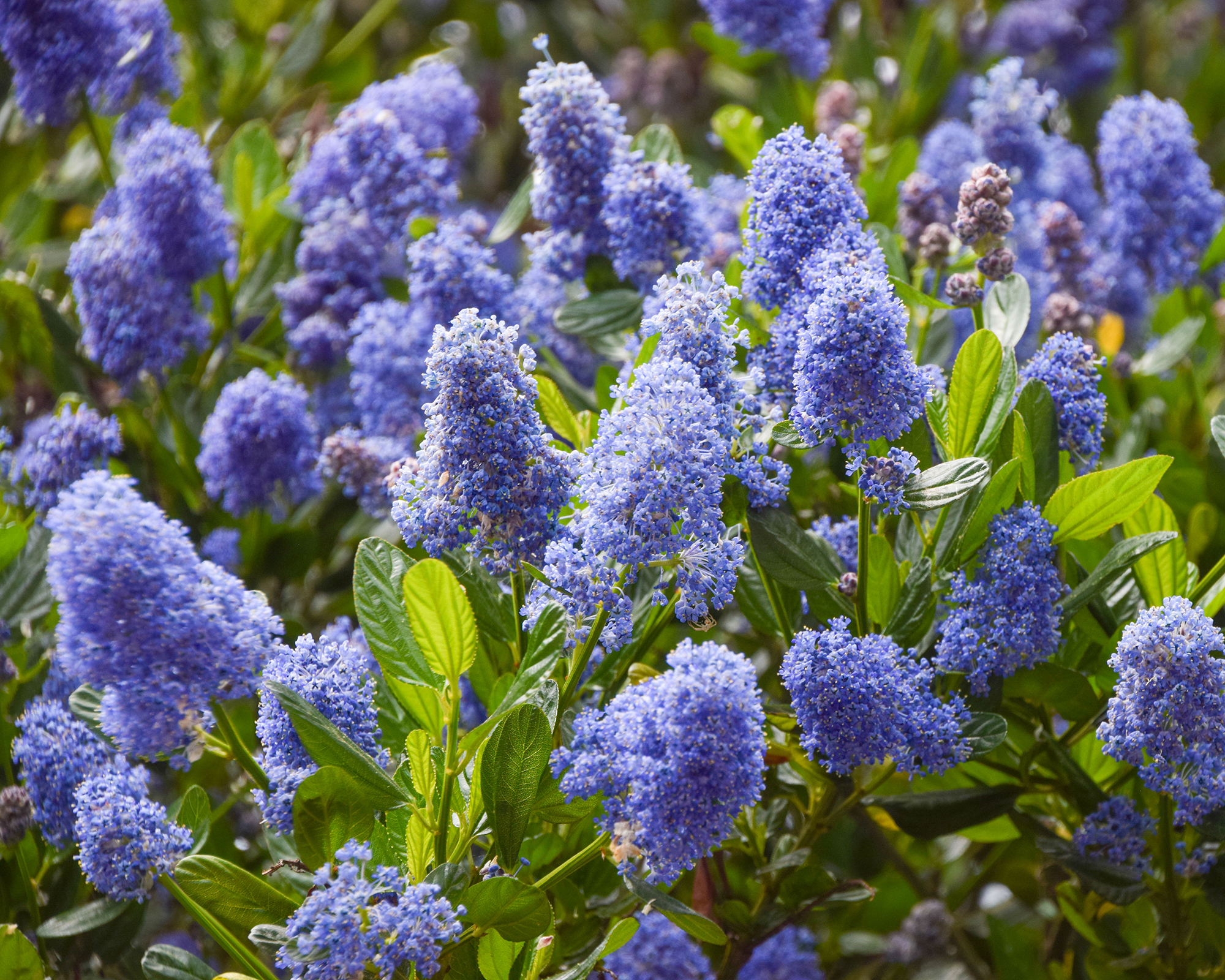
California lilac, also known as Ceanothus, is one of those rare plants that combines effortless care with dramatic beauty. Its brilliant blue flowers are as stunning as they are useful, drawing pollinators and offering shelter to native birds. I first encountered Ceanothus at the San Francisco Botanical Garden, and it was in their plant store that I bought my very first one. I planted it in my sandy backyard, and before long it had grown to my height, delivering a vibrant splash of indigo blue every spring.
Of course, you don’t have to stop at one – and I certainly didn’t. With more than fifty species of Ceanothus to choose from, there’s a form for every garden, from low, spreading varieties to taller ones that could easily pass for small trees. All are drought-tolerant, unfussy about care, and require no fertilizer, which makes them as practical as they are beautiful. The 'Victoria' California lilac shrub, available from Lowe's is known for its particularly dense flowers.
Ceanothus spp., as they’re known botanically, range from 3 to 18 feet (0.9 to 5.5m) in height and width, thriving in USDA zones 7 to 10. They prefer full sun and well-draining acidic soil, but they’re remarkably tolerant of different conditions. Mine have thrived in part sun, dappled light, and even extremely sandy soil, never once suffering from pests and needing water only during extended dry spells.
What I love most about California lilac is that you can find a variety to fit any garden, no matter the size or style. They’re equally at home spilling over a slope, standing tall as a focal point, or nestling among other drought-tolerant shrubs. And when those flowers arrive – rich, velvety, and intensely blue – they bring a touch of magic that lasts well beyond the bloom itself.
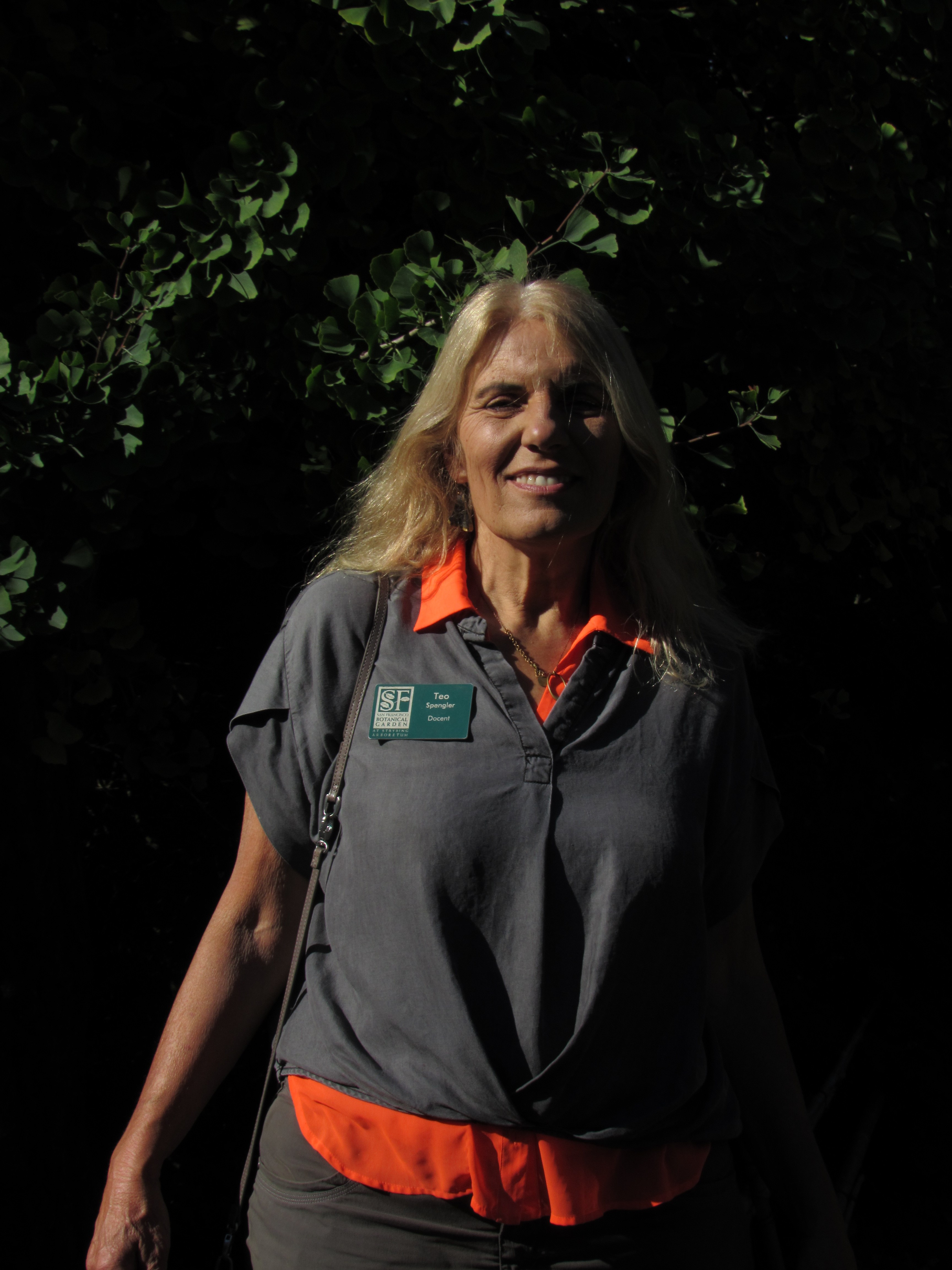
Teo Spengler is a master gardener and a docent at the San Francisco Botanical Garden, where she hosts public tours. She has studied horticulture and written about nature, trees, plants, and gardening for more than two decades, following a career as an attorney and legal writer. Her extended family includes some 30 houseplants and hundreds of outdoor plants, including 250 trees, which are her main passion. Spengler currently splits her life between San Francisco and the French Basque Country, though she was raised in Alaska, giving her experience of gardening in a range of climates.